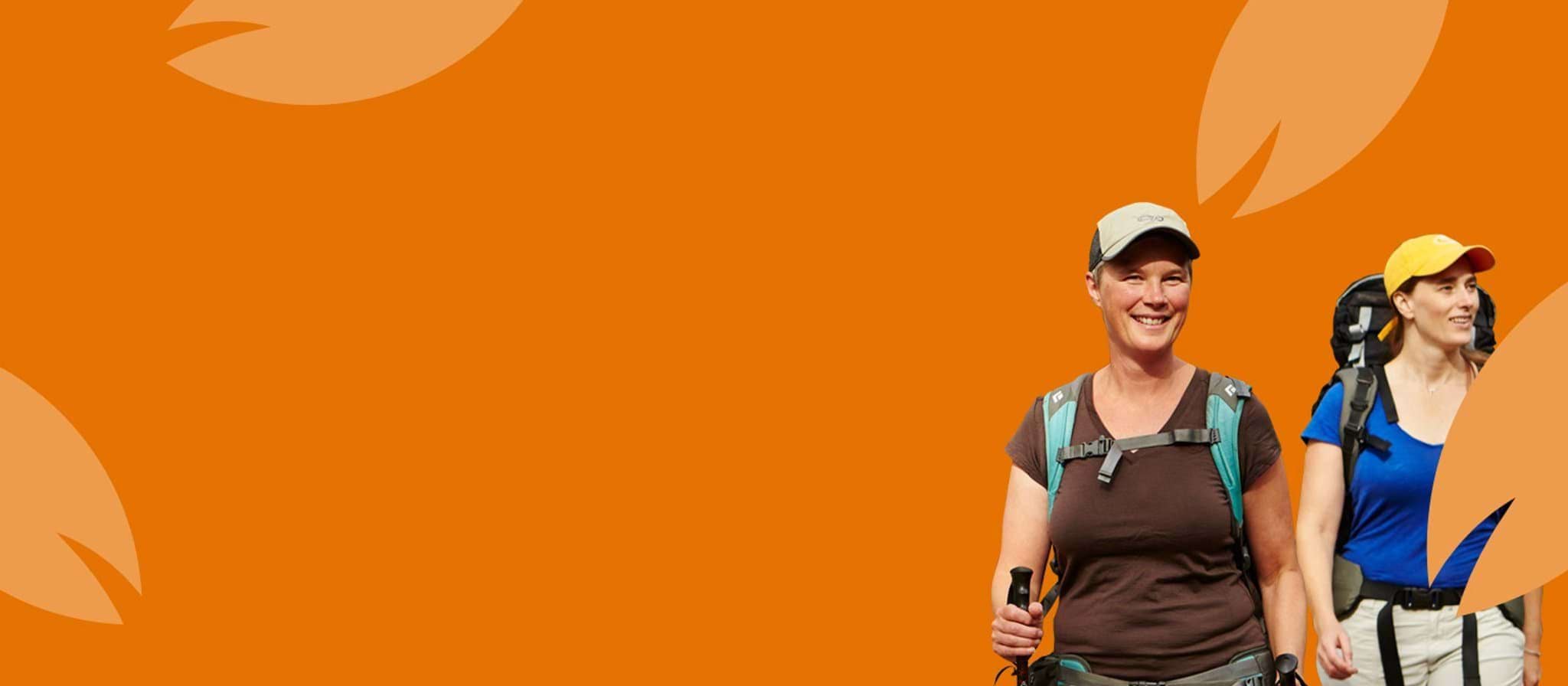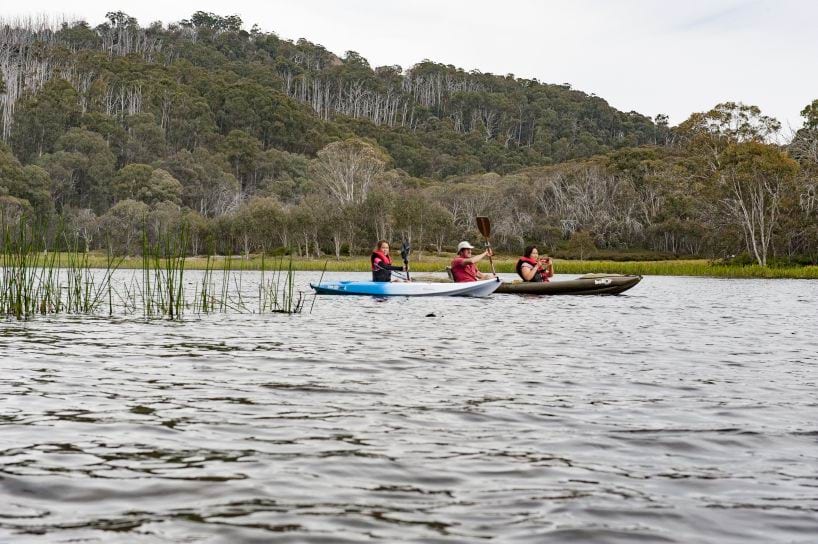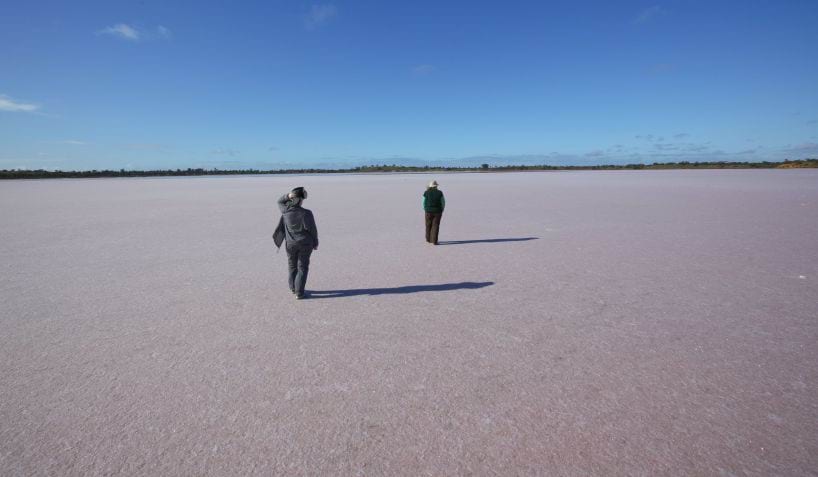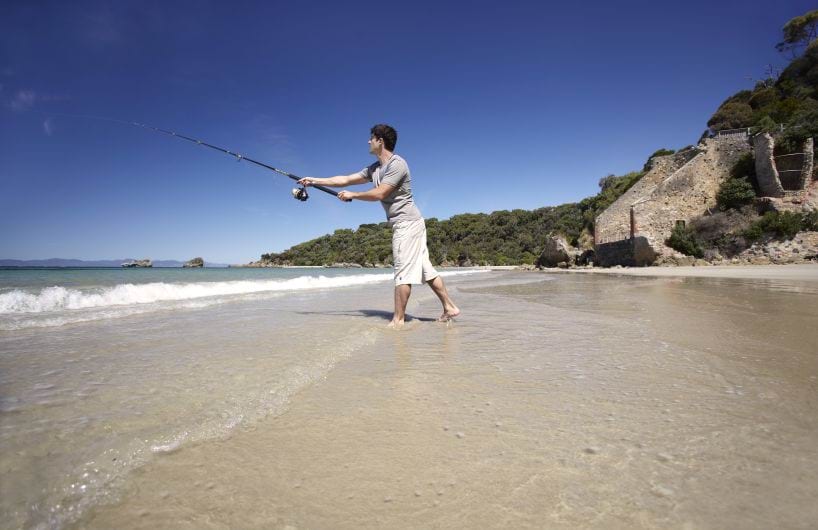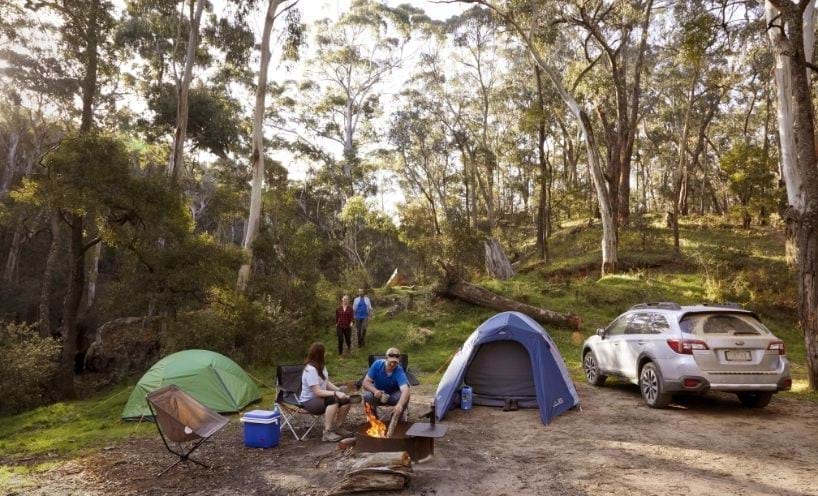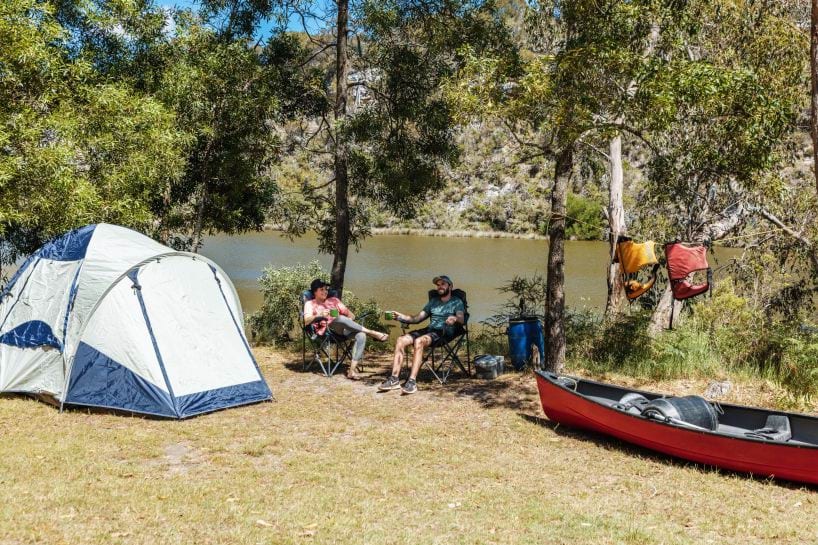5 camping experiences to give you a taste of everything Victoria offers
Victoria has almost every kind of Australian landscape.
Check with Parks Victoria because many camping locations require bookings.
Always stay COVIDSafe and aware of the risk of bushfires, floods and other hazards.
- All images supplied by Parks Victoria
1. Lake Catani campground, Mount Buffalo National Park
The Lake Catani campground sits among snow gums just behind the old Mount Buffalo Chalet.
It has a raft of features to make your stay on the stunning Mount Buffalo plateau comfortable.
The campground and Mount Buffalo National Park have something for everyone.
There are 49 campsites at Lake Catani, with some for small caravans or campervans.
Several campsites cater for people with limited mobility and have separate accessible shower and toilet facilities.
You’ll need your own drinking water, but everything else you’ll need is there.
It has toilets, hot showers, a mess hall, fireplaces and basic laundry and dishwashing facilities.
A refurbished picnic shelter has accessible toilets, gas barbecues and tables.
A lake is a great place for picnics, canoeing and swimming. The and the campgrounds are handy for many activities.
There is a new, fully accessible lookout with a glass-bottomed platform over the Mount Buffalo Gorge.
Waterfalls, wildflowers and wildlife abound here.
Bushwalking, hiking, mountain biking and exploring the granite cliffs and outcrops are popular.
Access is via a sealed road off the Great Alpine Road at Porepunkah.
Two hike-in campsites at Mt McLeod and Rocky Creek are available for a more secluded getaway.
For more about Lake Catani and booking details visit Parks Victoria/Lake Catani campground
2. Pink Lakes, Murray-Sunset National Park
The Pink Lakes in the Murray-Sunset National Park have captivated photographers for decades.
Why? They love the big blue skies, red soil and the strangely pink lakes.
The lakes appear pink because of the natural algae in the ultra-salty water.
The turnoff to this lonely spot is about half an hour west of Ouyen near Underbool.
It's a short distance up a well-graded gravel road off the Mallee Highway. The access road is suitable for two-wheel-drive vehicles.
They don’t call this remote part of Victoria Sunset Country for nothing. The colours around sundown in this part of the world are like nothing you’ve seen before.
Salt lakes occur in depressions all over the Mallee, but the Pink Lakes are something special.
Follow Pioneer Drive to see the best of the lakes by road. The Kline Loop Nature Walk shows remnants of the salt mining operation that ran there until 1979.
Keep your eyes out for Mallee fowl and a host of native birds, mammals and reptiles.
There is plenty of space at the Lake Crosbie campground. It offers toilets, fireplaces and picnic tables. There are no bookings or fees here, but you will need to bring your own water, supplies and a gas barbecue or stove.
Those with four-wheel drives can explore the sandy tracks in this vast national park.
Beware, though. There is no mobile phone access. Take emergency supplies. Let local police know before you venture deeper into the park.
For more about Pink lakes - Murray Sunset National Park and booking details visit: Park Victoria/places-to-see/sites/lake-crosbie-campground
3. Bear Gully campground, Cape Liptrap Coastal Park
Cape Liptrap is one of the southernmost points on the Victorian coast.
It’s near Walkerville, about two hours from Melbourne off the South Gippsland Highway.
It’s less than an hour to the region’s main town, Inverloch. Tidal River, the main centre in the Wilsons Promontory National Park.
Bear Gully in the Cape Liptrap Coastal Park offers campers an amazing experience. It’s no luxury getaway, but it’s ideal if it’s peace and quiet you’re after.
The campsite is behind the sand dunes just off the beach on Waratah Bay and near a shady stand of tall Banksias.
There’s easy access to the beach via a short walking track but the beach is not patrolled.
A rocky reef is popular for snorkelling, fishing and rock pooling.
The Cape Liptrap lighthouse, on a bluff overlooking the Bass Strait, offers commanding views across Waratah Bay to Wilsons Prom.
This part of the world offers all the charm of the Otways and the Surf Coast without the crowds.
There are historic lime kilns on the Lime Burners Walk through the Cape Liptrap Coastal Park. The kilns turned limestone into burnt lime for making cement in Melbourne.
There are 34 campsites at Bear Gully for up to six people a site. . There is space for tents, campervans and caravans. There are non-flushing toilets, shared campfires and no electricity at the campground. You must book in advance and pay before you get there.
You’ll need to supply your own wood for campfires and bring your own drinking water.
For booking details visit: Parks Victoria/Cape-Liptrap-coastal-park
4. Lerderderg campground, Lerderderg State Park
The beautiful Lerderderg State Park is not much more than an hour from Melbourne and lies north of Ballan and Bacchus Marsh off the Western Freeway.
But don’t be fooled by its proximity to the big smoke.
The Lerderderg River tumbles down from the top of the Great Dividing Range near Blackwood, east of Daylesford, and has carved a gorge that’s up to 300 metres deep through the sandstone and slate in the region.
This is heaven for kayakers, four-wheel-drive enthusiasts, walkers and hikers.
The park boasts tracks for people seeking anything from an easy stroll to an overnight trek.
There are also a few great swimming spots inside the gorge.
Birds including cockatoos, currawongs and crimson rosellas abound along with wallabies, kangaroos and koalas.
An old water race that diverted the Lerderderg River from its natural course to allow early prospectors to sluice the riverbed for alluvial gold can also be explored.
The Lerderderg Campground is accessible via ordinary passenger cars but the Amblers Crossing campsite can be accessed by walking in or by four-wheel drive.
Other picnic sites are easily reached on foot.
The Lerderderg campground has toilets, fireplaces and picnic tables.
For booking details and more visit: Parks Victoria/Lerderderg-campground
5. Forest South campground, Lower Glenelg National Park
If you’re looking for a western Victorian getaway without the crowds on the Shipwreck Coast or the Grampians, the Lower Glenelg National Park might be ideal for you.
The Glenelg River has carved a gorge right through the park as it descends to the sea at Nelson, exposing limestone cliffs.
The Forest South Campground is accessible by two-wheel drive cars all year round via the Portland-Nelson Road.
Kayakers, canoeists and anglers love this spot, which is handy to Nelson and the South Australian city of Mount Gambier, about half an hour away, for all your supplies.
The Forest South Campground is one of the many stops that paddlers can take along the Glenelg River Canoe Trail, a three-to-four-day trek along one of Victoria’s most beautiful rivers.
Koalas live in the gums that line the Glenelg.
The Koala is just one of the many bird and animal species that call the park home.
The Forest South Campground is just off the Great South West Walk, an incredible 250km trail loop that begins and ends in Portland and traverses the coast to Nelson, along the Glenelg River and back via the Cobboboonee National Park.
And it’s close to the Princess Margaret Rose Cave, one of the best examples of a limestone cave anywhere in Australia.
The campground has four unpowered sites for up to six people, of which three are suitable for campervans, camper trailers and tents and one is for tents only.
It has non-flush toilets, fireplaces, picnic tables and non-potable water. Bring your own drinking water.
Bookings for Forest South and any other site on the canoe trail must be booked and paid in advance.
For booking details and more: Parks Victoria/lower-glenelg-national-park/forest-north-and-south-campground
Before you go
- plan your trip before you leave so you understand the rules, and remember you may need to book your campsite before you travel.
- learn how to stay COVIDSafe.
- download the VicEmergency app and check you can tune into the local emergency broadcasters
- remember to keep 1.5 metres from anyone you don’t live with, and carry a fitted face mask to wear in any public indoor spaces or if you’re in a crowd
- get tested and isolate at your accommodation if possible if you have any coronavirus (COVID-19) symptoms while you’re away
- book ahead or have a plan B in case your destination is at capacity
- don’t forget to shop local and support our Victorian businesses and producers
- keep up-to-date on public health information at www.coronavirus.vic.gov.au
- read about campfire safety before you go. Check the weather where you’re heading, and consider re-scheduling if fire danger is high or there’s stormy weather ahead.
- never leave a campfire unattended
- learn the rules for lighting campfires in national parks, state parks and state forests before you travel, and
- always extinguish your campfire with water, not soil. If the fireplace is cool to touch, it’s safe to leave.
Updated
